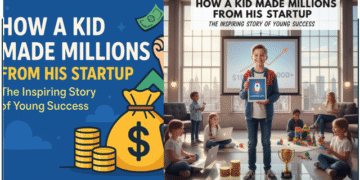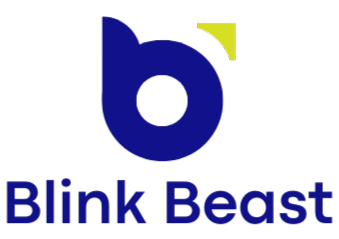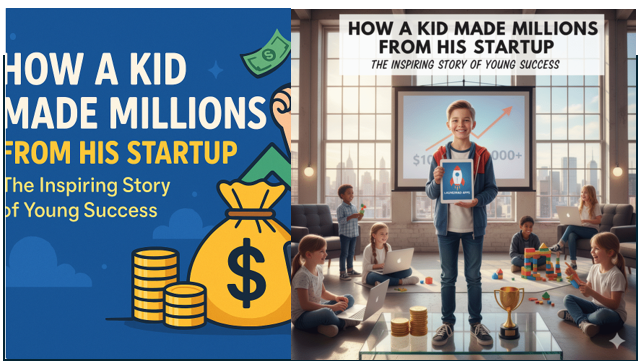In a world full of stories about business tycoons who built empires in their 30s or 40s, few are as striking as those of teenagers turning humble ideas into million-dollar realities. These young founders challenge assumptions, leap over obstacles, and show us what ambition, focus, and innovation really look like. Here’s one such story—how a kid with little experience and limited resources built a startup worth millions.
The Start: Curiosity & Frustration Spark Innovation
Every entrepreneurial journey begins somewhere. For many young founders, it starts with dissatisfaction—frustration with existing solutions or a gap in the market they notice.
Let’s name our hero Alex, a 15-year-old high school student. Alex loves food photography, social media, and health. He notices that a lot of calorie-tracking apps require manual input—taking time, requiring discipline, often giving errors. He thinks: “What if I could take a picture of a meal and get nutritional info instantly?”
That question becomes the seed of his startup idea: an app called SnapNutri.
From Idea to Prototype: Learning Fast
Alex isn’t a seasoned developer yet, but he starts learning. He borrows books, watches online tutorials, experiments with basic machine learning code, and prototypes a simple app that can recognize common foods. He uses open source models, free APIs, and online datasets.
Key actions in this stage:
- Learning relevant skills: programming, image recognition, user interface design
- Creating minimum viable product (MVP): a basic version of the app that can do core functionality—take photo, identify food, estimate calories
- Gathering feedback: from friends, teachers, social media, local community
This step is crucial. Without an MVP, you don’t know if people will use your product.
First Traction: Testing & Marketing Smartly
Alex launches his app to a small group—family, friends, local gyms—and gets feedback. Users love the idea but point out issues: sometimes recognition fails, sometimes the UI is slow.
He fixes bugs, improves design. Then he starts marketing:
- Posting demos on TikTok / Instagram
- Sharing before/after user stories
- Working with student influencers
Early adopters begin to talk about the app. The community grows, downloads increase. Alex adds features (macronutrient breakdowns, saving meals, sharing) based on user feedback.
Monetization Strategy: Turning Users into Revenue
Soon, Alex needs to decide: how will this become a business?
He adopts a freemium model:
- Free version with basic features (photo recognition, calorie estimates)
- Premium subscription for advanced analytics, smart meal plans, removing ads
He also explores partnership with wellness coaches who can use the platform to monitor clients.
This mix—subscriptions + partnerships—starts bringing in modest revenue.
Scaling Up: Investment & Resources
As usage rises, Alex realizes he needs more resources: better servers (for image recognition), more data, possibly hiring someone.
He pitches the app to angel investors and gets seed funding. Perhaps he raises $200,000 from local angel investors impressed by growth metrics: number of users, retention rate, monthly recurring revenue (MRR). With funding, he hires a small team: a backend engineer, a designer, a data scientist.
He moves from being a solo-founder to managing a tiny startup.
Growth Phase: Metrics, Marketing & Expansion
With the team in place, Alex focuses on scaling:
- Improving image recognition accuracy using machine learning and larger datasets
- Optimizing onboarding flow to reduce user drop-off
- Amplifying marketing: paid ads, influencer campaigns, maybe international reach
He ensures the app works not just in his country, but adds support for foods from different regions, multiple languages.
Monthly revenue climbs: from hundreds to thousands to tens of thousands. Users subscription growth, daily active users increase.
The Big Milestone: “Millions” Achieved
By age 17 or 18, SnapNutri reaches several million dollars in valuation. Perhaps it hits $5–10 million in annual recurring revenue. Investors see potential—health & fitness market is huge.
Maybe a bigger company (in wellness, food tech, or nutrition) acquires SnapNutri, or Alex raises a Series A round with valuation in the millions.
Alternatively, he could continue to scale, expand globally, hire more staff, improve technology, and increase revenue.
Challenges Along the Way
Of course, the road is not smooth. Some typical obstacles young entrepreneurs face:
- Credibility: being taken seriously by investors, partners, customers when you’re a teenager can be hard.
- Resources: limited funds, often working from home or school, no large team early on.
- Technical hurdles: image recognition, data accuracy, server costs.
- Balancing school and startup: time management, risk of burnout.
- User trust and privacy: especially in health/nutrition, people care about their data safety.
Alex overcomes these by:
- Being persistent
- Getting mentors (maybe local business figures or teachers)
- Learning from criticism and user feedback
- Managing time carefully, sometimes sacrificing leisure
Key Ingredients of Success
From Alex’s story (and actual young entrepreneurs), we can derive some key lessons:
- Start early & learn constantly: The more time you spend learning skills (coding, business, design), the better.
- Solve real problems: Your idea should come from something people care about. If people are frustrated by manual calorie input, solving that is meaningful.
- Build a minimum viable product: Don’t wait to make it perfect. Test, iterate.
- Focus on traction / metrics: Users, retention, revenue—these matter more than flashy features.
- Use cost-efficient marketing: Social media, word of mouth, influencers.
- Seek funding smartly: Only when you need it, with clear metrics and roadmap.
- Handle failures & criticism: Fix issues, make product better.
Real-World Examples That Inspire
Here are some real cases that mirror key parts of Alex’s journey:
- Erik Finman: As a teenager, he turned a gift of about $1,000 into a sizable Bitcoin portfolio, then used the gains to launch an education startup.
- Nick D’Aloisio: At age 15-16, he built Summly, a news summarization app. Yahoo bought it for ~$30 million.
- Zach Yadegari: In high school, he founded Cal AI, an app that recognizes meals and tracks calories, generating tens of millions in revenue while still a teenager.
These stories show that what seems like a big leap—turning an idea into millions—is possible when the fundamentals are strong.
What This Means for Other Young Founders
If you’re a teenager (or someone mentoring young people), Alex’s story shows it’s not just about luck—it’s about doing the work, pushing through self-doubt, staying curious, and solving problems people care about.
Even if you don’t become a millionaire, you’ll gain lessons that help in life:
- Confidence in learning
- Experience managing a small team
- Understanding business fundamentals
Also, your startup could impact others: getting people healthier, giving them tools, inspiring more innovation.
Conclusion: Don’t Wait for Perfection — Begin Now
The story of Alex (like many real young entrepreneurs) teaches us that ambition, learning, solving problems, and executing fast matter a lot more than having everything perfect. Starting small, iterating, being open to feedback, and focusing on traction and revenue are the pathways to turning a bright idea into millions.
So if you have an idea, especially one that bothers you as a user (something you wish worked better), that might just be the seed of something big. Don’t let your age stop you. Start now.
















